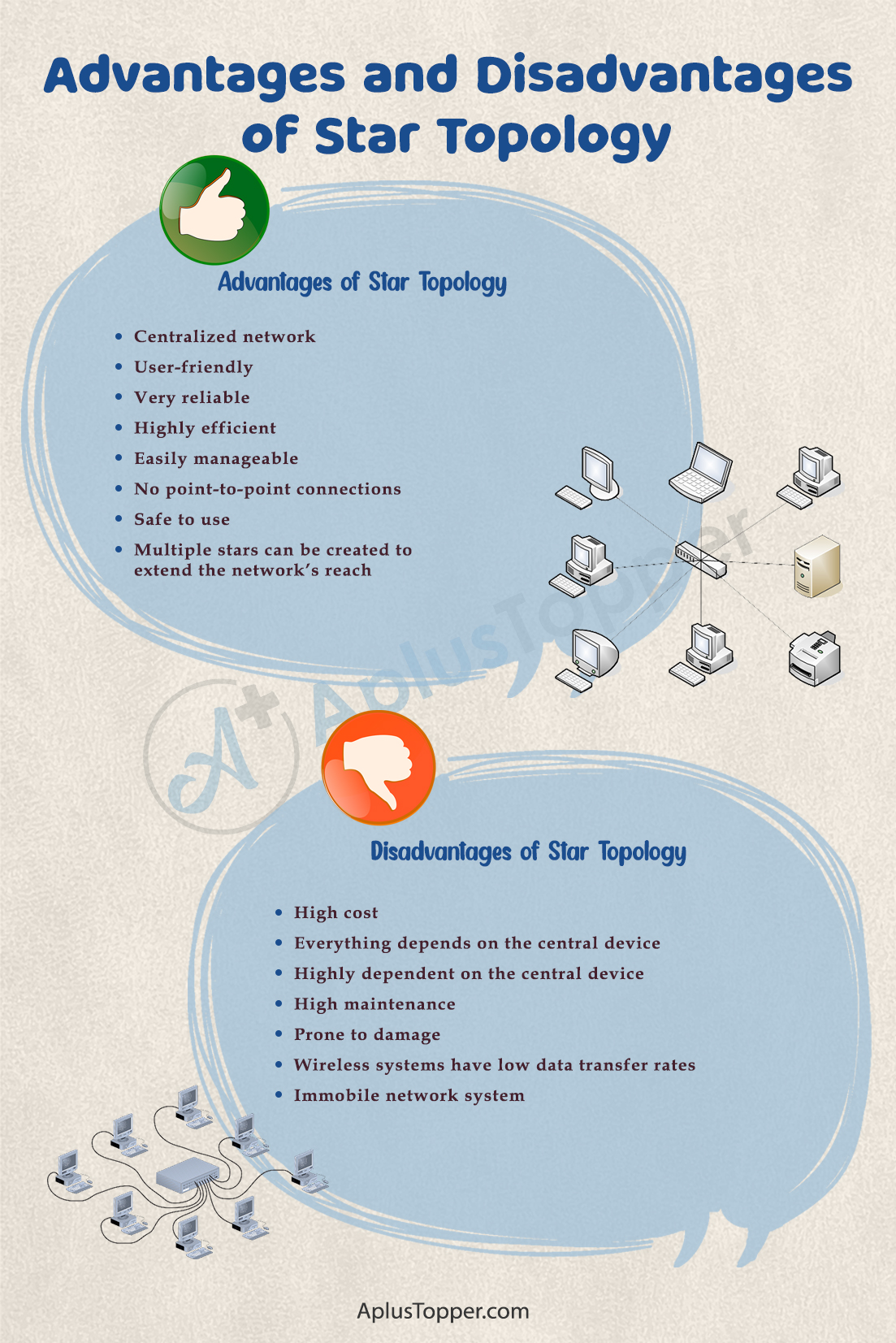
Star Topology Advantages and Disadvantages What is Star Topology? Advantages and Disadvantages
1. High cost: Within the star topology implementation of a router or switch, it's very costly, especially when using a router or a switch as the central network device. 2. Central device Dependency: Within the star topology, when a hub malfunctions, then everything goes down because no devices can work without a hub.
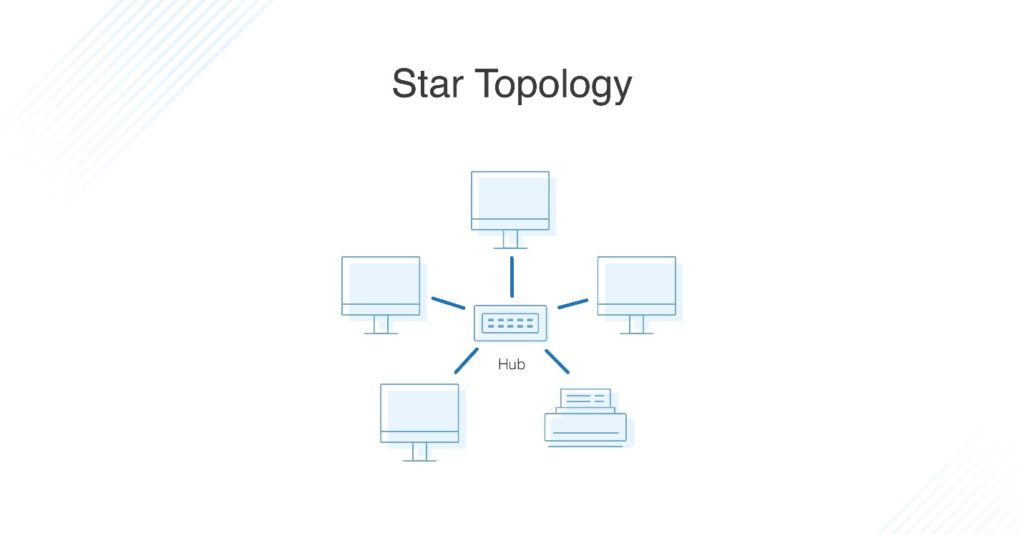
Advantages And Disadvantages Of Star Topology
Pros: Easy installation Fewer cables required than Mesh and star topology Good for small businesses Low cost Easy to manage and expand Cons: Backbone performance is critical Easily congested on busy periods Efficiency decreases rapidly with each added node Data can only travel in one direction at any point in time

Advantages And Disadvantages Of Network Topology (Topologies)
List of the Advantages of Star Topology 1. Star topology features a better fault tolerance. When a star topology experiences a cut cable or a NIC failure, then it will only affect one node. This advantage is due to the nature of the installation as each device connects independently to the central core.
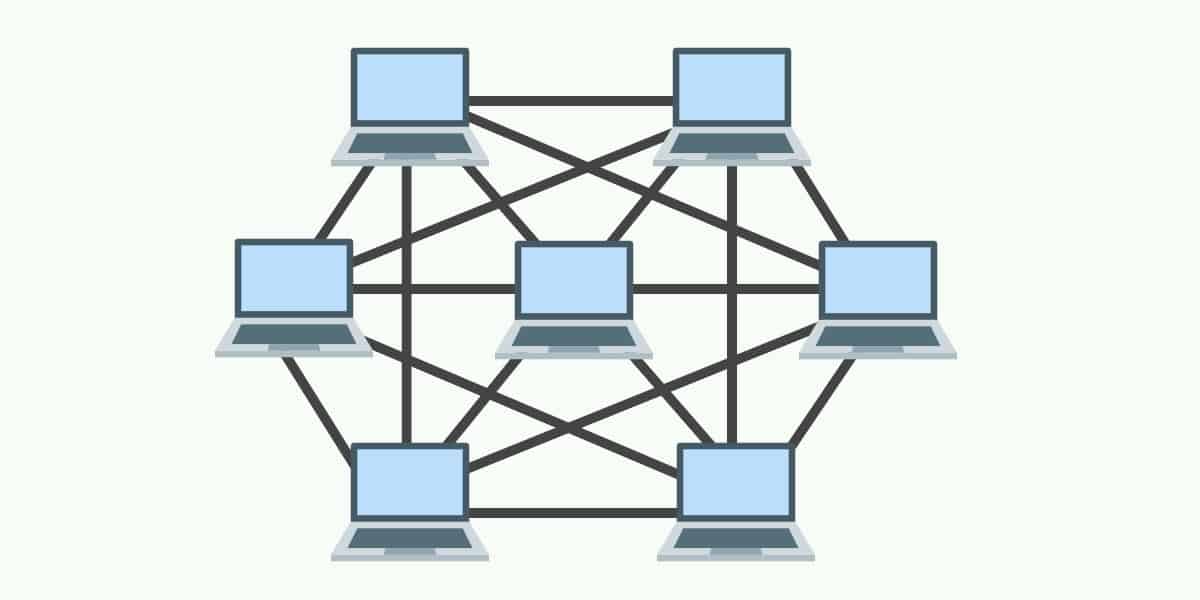
Advantages and disadvantages of mesh and star topology
Disadvantages of Star topology: More cables are required to be connected because each computer individually connects to the central server Single point of failure in case the server get down..

🌷 Star topology advantages and disadvantages. Advantages and disadvantages of network topologies
Advantages of Star topology: - Easy to add new nodes - Nodes are isolated from each other - Cheaper than Mesh topology - Easy installation and reconfiguration Disadvantages of Star.

[Term 2] Give two advantages and two disadvantages of star topology
Star Topology Advantages and Disadvantages: 5 Outstanding Aspects - Heavy Coding Home » Computer Networks Star Topology Advantages and Disadvantages: 5 Outstanding Aspects by Priyanshu Raj In the world of computer networking, the choice of topology plays a critical role in determining how data is transmitted and how resilient a network is.

What is Star Topology , Advantages and Disadvantages of Star Topology YouTube
Disadvantages of Star Topology. • Requires more cable length than a linear bus topology. • If the connecting network device ( network switch) fails, nodes attached are disabled and cannot participate in computer network communication. • More expensive than linear bus topology because of the cost of the connecting devices ( network switches ).
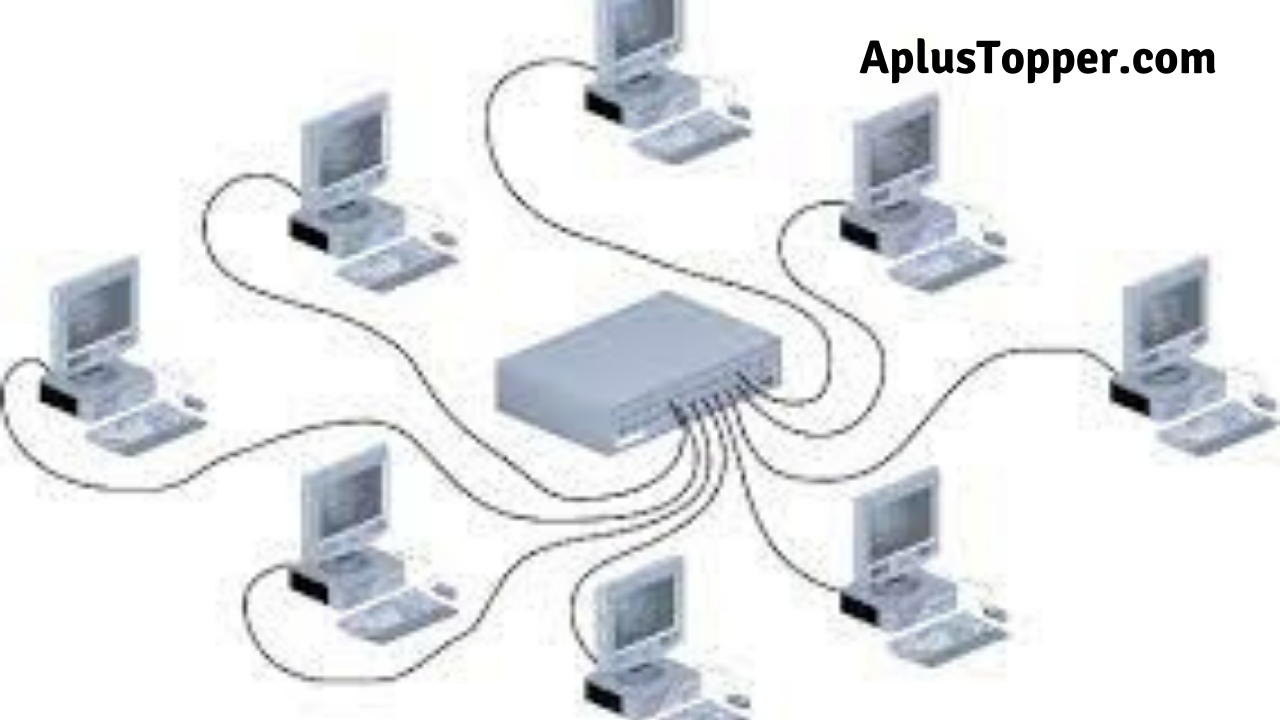
Star Topology Advantages and Disadvantages What is Star Topology? Advantages and Disadvantages
A peripheral device (client) failure doesn't affect the whole network. There are n links required to connect n devices in the star network. More suitable for Local Area Network (LAN). Data transmission speed is fast and there is no chance of data collision as each device has one to one connection to hub, which means no bandwidth issue.
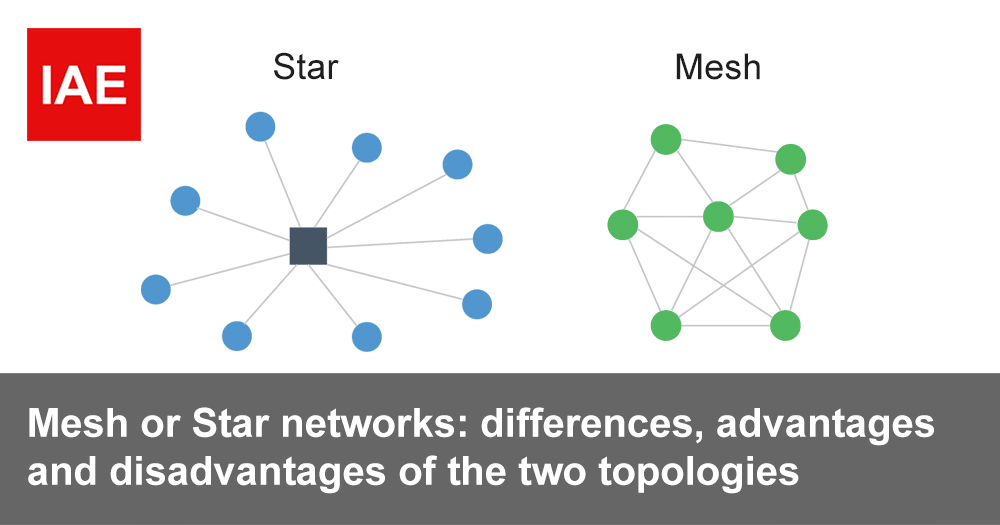
Mesh or Star networks differences, advantages and disadvantages of the two topologies by
Disadvantages of Star Topology Requires more cable than a linear bus . If the connecting network device (network switch) fails, nodes attached are disabled and can't participate in network communication. More expensive than linear bus topology due to the value of the connecting devices (network switches)

Star topology advantages and disadvantages ! Types of network topology YouTube
network. Unshielded Twisted Pair (UTP) Ethernet cable is used to connect workstations to central node. Star Topology Diagram Advantages of Star Topology 1) As compared to Bus topology it gives far much better performance, signals don't necessarily get transmitted to all the workstations. A sent signal reaches the

Top 6 Network Topologies Explained Pros and Cons [Including Diagrams] (2023)
1. Installation 2. Space 3. Maintenance 4. Easy to Troubleshoot 5. Fast Networks 6. Easily Update and Upgrade 7. The Network Can Be Expanded 8. Centralize Network 9. Performance 10. Robust in Nature Disadvantages of Star Topology | Drawbacks of Star Topology 1. Costlier 2. Dependent on HUB or SWITCH 3. Limitations of Connections 4.

💐 Network topology star advantages and disadvantages. Star Topology Working, Features
High Security Star topology can provide high security. The central hub or switch can be configured to control access to the network, ensuring that only authorized devices can access the network. This can help to prevent unauthorized access to the network. Disadvantages of Star Topology Single Point of Failure
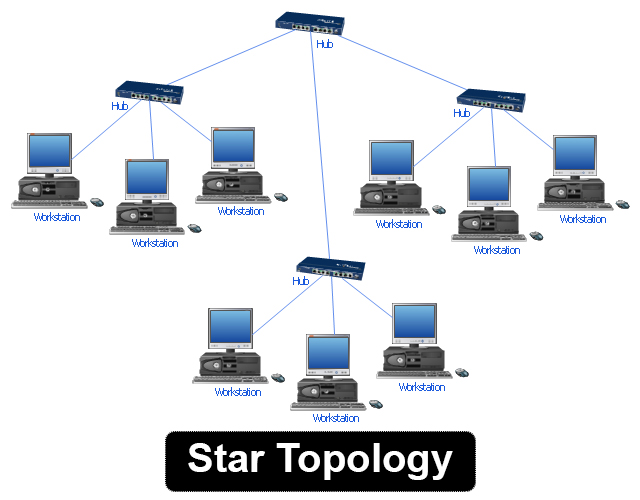
Advantages and disadvantages of star topology IT Release
Disadvantages star layout Characteristics of a star topology For a network topology to be identified as a star topology it should at least have the following features. Connected to a central point. All devices are connected to a central networking device such as a hub or network switch. Point-to-point connection.

What is network topology? types of network topology The Study Genius
Jason Roy March 22, 2020 1 Comment Star topology is a type of network topology where nodes are connected to central connection point, like a hub or a switch. Explaining in detail What is Star Topology? Star Topology is by far the most commonly used Network Topology in Computer Networks.
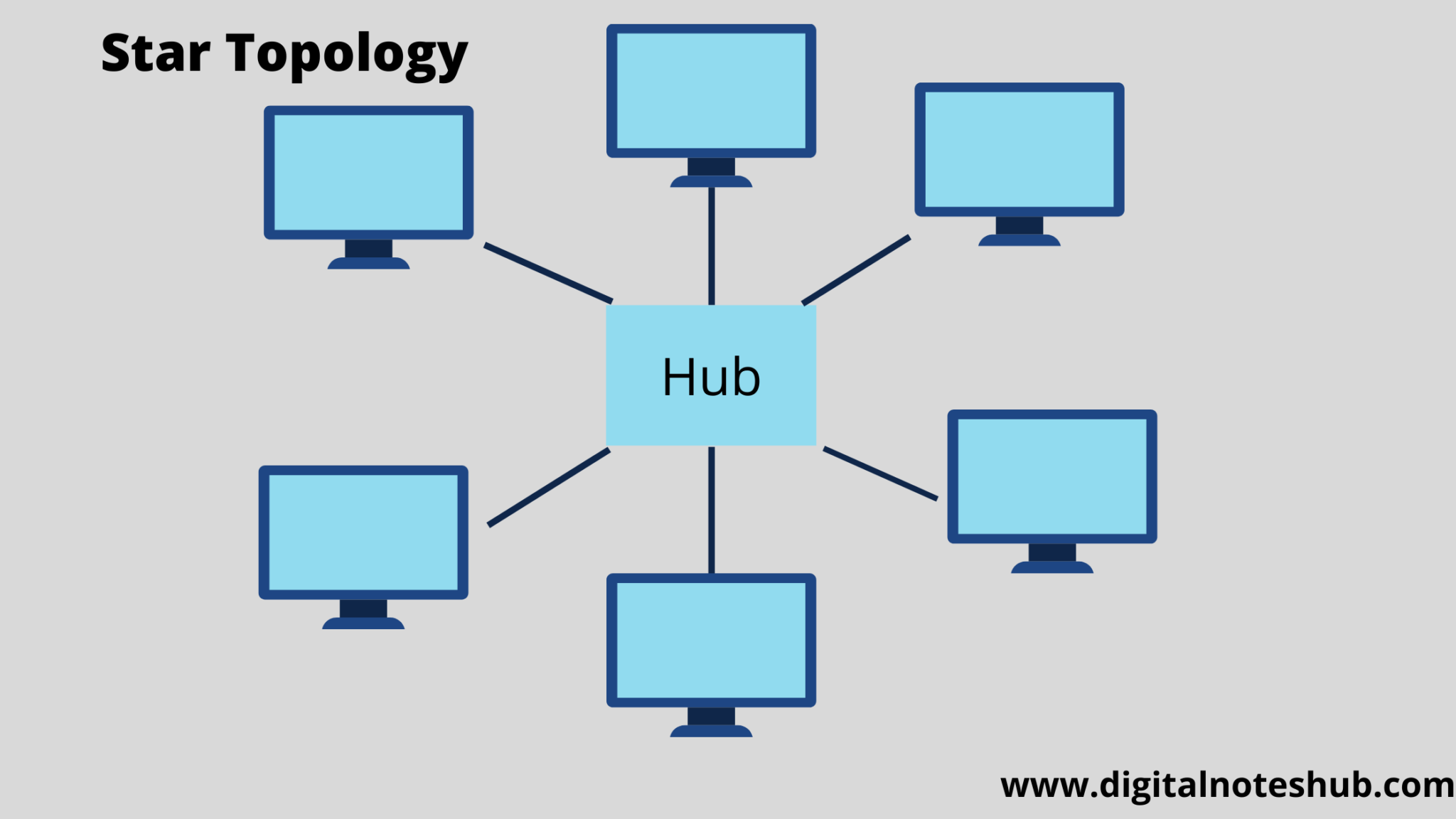
Types of Topologies Diagrams, Advantages and Disadvantages
There are several advantages of using star topology to connect the nodes in your computer network. Some of these advantages are mentioned below: 1. High Fault Tolerance. In star topology, only a single node is affected when there is a NIC failure or the link between the node, and central equipment is damaged.
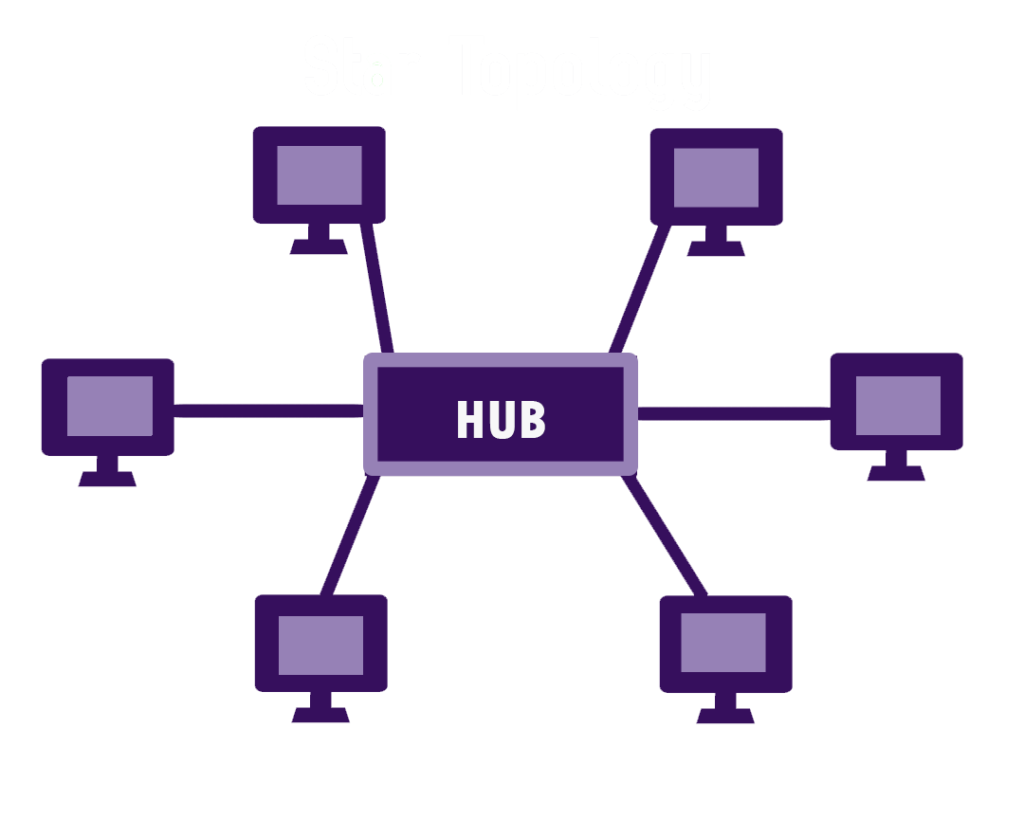
Advantages & Disadvantages and Usage of Star Network Topology LiveWebTutors
Star Topology Advantages and Disadvantages: Star topology is a network topology form where each piece of the network is attached to a central node called a hub or switch. In this network, every host is connected to a central hub. In the simplest form, one central hub acts as a channel to transmit messages.